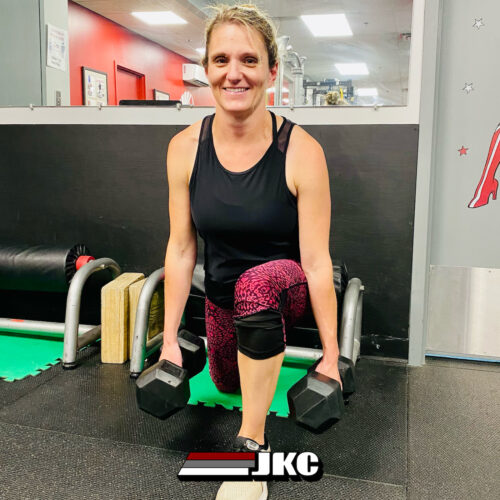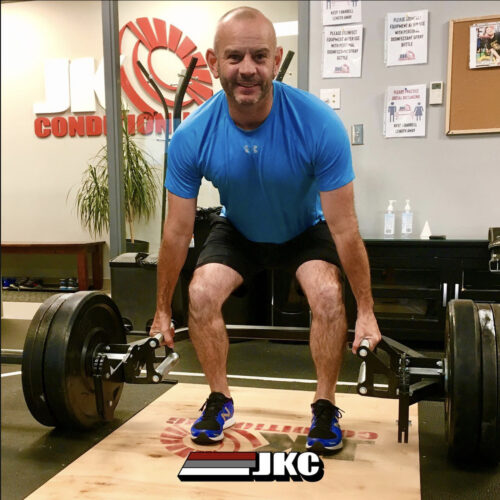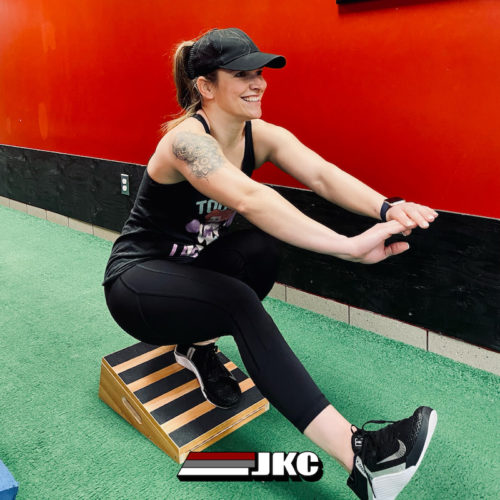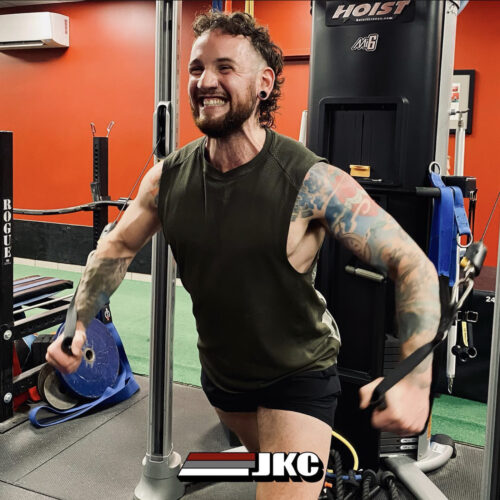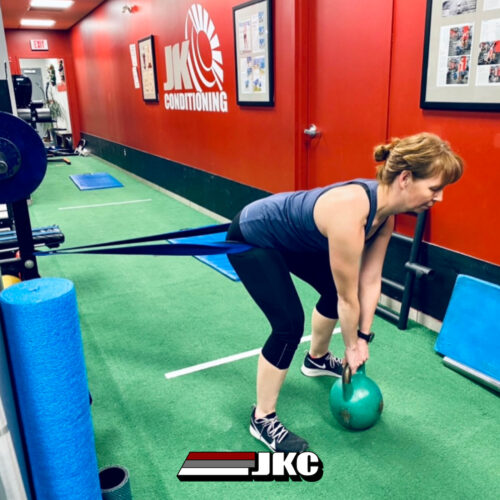 Far too often we only focus on what program to do, what run to do today or how many miles to run this week, but we don’t usually spend time planning our recovery. In my humble opinion, the recovery is more important than the program itself. If you’re not recovering properly and effectively, it doesn’t matter how good your program is or how good you are as a runner, you will not succeed…and that’s the bottom line for any athlete in any sport.
Far too often we only focus on what program to do, what run to do today or how many miles to run this week, but we don’t usually spend time planning our recovery. In my humble opinion, the recovery is more important than the program itself. If you’re not recovering properly and effectively, it doesn’t matter how good your program is or how good you are as a runner, you will not succeed…and that’s the bottom line for any athlete in any sport.
Time has to be taken to plan the recovery process to enable you to be ready for the next workout, time trial or race. This has to be done and updated throughout the season based on how you’re feeling, recovering and running.
So keep in mind always, to be a successful runner (doesn’t matter if you run 60 minutes for 10km or 27 minutes, you MUST TRAIN HARD AND RECOVERY HARDER.
Remember, this series was kindly written by Cliff Harvey, a Naturopath specializing in holistic performance nutrition and mind-body medicine. Cliff currently lives in Auckland, New Zealand.
Take it away Cliff:
6 Simple Daily Habits to Improve Recovery
Anything that requires recovery can be termed a ‘stressor’. Many of the stressors in the modern world we could consider ‘negative stressors’ (such as carcinogens from food, undue and chronic mental and emotional stress and lack of sleep). However a potent ‘stressor’ that we all engage in, and that is overwhelmingly positive is training itself!
Training and sports are overwhelmingly positive…however they still require recovery and they can tip us over our own unique and individual ‘stress threshold’ if the rest of our lifestyle isn’t in balance.
We can, I believe, become overly concerned with minutiae of training and recovery, when in reality it is a balance of lifestyle factors that allows us to perform at our best.
Listed below are just a few of the ‘biggest bang for your buck’ strategies you can apply to help you recover more effectively…and more importantly to LIVE more healthily! Of course there are many other important factors in health and performance (with good quality, whole and unprocessed nutrition being chief among them as well as adequate sleep etc.) but these are a few strategies that you can implement right now for an immediate benefit.
1. BE STILL
Just stop, relax and be still! I don’t care whether you meditate, pray or do something else – so long as it is still, calm and centred.
Most runners know the feeling of being ‘in the zone’ and in many ways this is a dynamic meditation and many people don’t realize that dynamic meditations have been a part of most spiritual traditions for a long time (take for example the whirling of the Sufis and the walking meditations in Buddhist tradition). So many runners are already getting some great contemplative and stress reducing mindfulness activity in their day without even realizing it!
BUT I have certainly seen that many of my clients benefit from simple, seated, still meditation or prayer.
Why?
Because we all to a greater or lesser degree in this modern world suffer from ‘action distraction’ where we need to be doing ‘something’.
This in itself can result in an increase in release of the stress hormones – negatively affecting recovery and possibly predispose us to adrenal fatigue.
Benefits:
- Reduced stress hormone profiles
- Improved ability to deal with mental and emotional stress in daily life
- Improved physical recovery
2. TAKE FISH OILS
Take a handful of fish oils daily….just do it!
Thankfully now it is fairly universally recognized that fish oils (and more correctly the omega 3 fats DHA and EPA) reduce rates of inflammation in the body.
Inflammation following training, injury or any other type of physical trauma is of course a valuable and necessary process. However a problem arises due to our modern diet being far too heavy in Omega 6 fats. Omega 6 fats are more ‘pro-inflammatory’ than the Omega 3 fats and therefore when we consume too much, our inflammatory processes become overactive which effectively reduces recovery and repair whilst predisposing us to a greater incidence of insulin resistance, heart disease and cancer.
Omega 6 fats are more ‘pro-inflammatory’ than the Omega 3 fats and therefore when we consume too much, our inflammatory processes become overactive which effectively reduces recovery and repair whilst predisposing us to a greater incidence of insulin resistance, heart disease and cancer.
Why?
The Omega 3 fats eicosapentaenoic acid (EPA) and docasahexaenoic acid (DHA) compete with arichodonic acid (AA) for positions on the phospholipid membrane of cells. AA however will bind to these sites in preference to DHA and/or EPA.
EPA, DHA and AA are utilized from the cell membrane to form various eicosanoids. The compounds derived from AA evoke a large inflammatory response, whereas eicosanoids resulting from DHA and EPA have lower biological potency – therefore inflammatory responses are reduced in response to DHA and EPA (Omega 3 fats) and increase in response to AA (Omega 6).
Where Omega 6 fats are consumed in excess or the ratio of AA to EPA and DHA is too high, there is likely to be a corresponding hyper immune, and hyper inflammatory response. (Hence the positive effect of Omega 3 fats in autoimmune diseases.)
In the modern western diet it is estimated that we consume between a 16:1 and 50:1 omega 6 to omega 3 ratio. In a natural wild human state this would more than likely be closer to 3:1.
How much?
I have my clients routinely taking 1g of fish oils per 10Kg of body weight.
3. Get Outside (and take some Vitamin D)
As well as it’s effects on immune modulation, mood, insulin function and corresponding relevance to heart disease, cancer and mental health Vitamin D has a critical role in not only bone formation but also in reducing inflammation in the body. Several markers of inflammation (including c-reactive protein and IL-6) are reduced by adequate exposure to sunlight or dietary vitamin D. Chronic Pain may also be exacerbated by low vitamin D levels.
The benefits of getting outdoors are more than simply improving Vitamin D status.
Connecting with nature, getting fresh air and simply having a change of environment (from the office or home) is immensely beneficial to our mental health, stress levels (which drastically affect recovery) and sense of calm. In fact being outdoors in a ‘green’ environment has been extensively shown to aid autoimmune conditions such as Psoriasis and mood disorders.
How Much?
I generally recommend supplemental Vitamin D in addition to healthy outdoor activity. 2000 IU or more of Vitamin D3 per day is commonplace amongst my athletes.
4. Increase Alkalinity
Eating a more alkaline diet is a bit of a buzz in the natural health and performance community nowadays. However it’s nothing new and there is some misinformation….
The idea that the blood can become dangerously acidic is not quite correct. In reality the pH of the blood is one of the most tightly controlled mechanisms in the body. Of interest to athletes is that the way we buffer our blood has some interesting implications.
To buffer the blood (make it more alkaline if our diet is providing too many acidic compounds to the body) we need to free up ‘basic’ (alkaline) compounds such as calcium from bone and glutamine from muscle tissue. To reduce the catabolism (breakdown) of bone and muscle it is prudent to eat a more alkaline diet. Because calcium is strongly basic it is one of the bodies primary means of preserving blood PH within the proper range. Metabolic acidosis causes a release of calcium from bone. As a result, osteoclastic (bone degrading) activity increases and osteoblastic (bone building) activity decreases. The net result of these changes is that bone is lost in order to neutralize the acidic environment of the body.
Muscle breakdown may occur as Glutamine is freed from muscle tissue to neutralize acidity.
Metabolic acidosis may also be involved with decreased IGF-1 and Growth Hormone activity, potentially affecting muscle, bone and connective tissue growth, repair and maintenance.
What’s Acid and What’s Alkaline?
Acidic foods as a rule are meats, dairy and grains. Several authorities have espoused low protein, low meat and dairy diets to offset metabolic acidosis without always recognizing the value of many nutrients found within these foods.
Highly alkaline (or alkaline forming foods) are found within the fruit, berries and vegetables groups.
If we eat more vegetables our diets will become more basic and will more closely resemble an ancestral diet that created less metabolic acidosis!
How?
-Eat your veggies!
Simple increasing vegetable intake can drastically change your acid-alkaline balance! Other highly alkaline foods are: most fruits and berries, sprouted legumes such as lentils and mung beans (you can see a pattern that natural, whole, primal food is good for you right?!)
-Take an alkaline protein
There are few supplemental proteins that are alkaline. Most supplemental proteins such as whey and casein are acidic. The best quality alkaline protein type is derived from golden peas (isolate) and now with the emergence of quality alkaline protein supplements athletes have another tool in their arsenal to reduce acidity in the diet.
5. Eat protein at every meal
If you don’t eat protein consistently you simply won’t recover as effectively. Yes you’ve heard from many ‘experts’ that you don’t need much protein…funny thing is most top athletes intuitively know this isn’t true…and most of the athletes I have consulted to are diligent about a consistent protein intake.
Who would you rather listen to – The fat dietician or the guy who’s currently kicking your butt in competition?
Great protein sources can range from lean meats and eggs through to natural dairy products (if tolerated) and my favourites – sprouted legumes (such as lentils and mung beans).
Some points to consider about optimal protein intake:
Adapted from “Protein Prejudice” by John Berardi PhD)
Increased Thermic Effect of Feeding — While all macronutrients require metabolic processing for digestion, absorption, and storage or oxidation, the thermic effect of protein is roughly double that of carbohydrates and fat. Therefore, eating protein is actually thermogenic and can lead to a higher metabolic rate. This means greater fat loss when dieting and less fat gain during overfeeding. (This can be an important factor for athletes who have been forced into greater levels of inactivity due to injury)
Since IGF-1 is an anabolic hormone that’s related to muscle growth, another advantage associated with consuming more protein is more muscle growth when overfeeding and/or muscle sparing when dieting.
Increased Glucagon — Protein consumption increases plasma concentrations of the hormone glucagon. Glucagon is responsible for antagonizing the effects of insulin in adipose tissue, leading to greater fat mobilization. In addition, glucagon also decreases the amounts and activities of the enzymes responsible for making and storing fat in adipose and liver cells. Again, this leads to greater fat loss during dieting and less fat gain during overfeeding.
Increased IGF-1 — Protein and amino-acid supplementation has been shown to increase the IGF-1 response to both exercise and feeding. Since IGF-1 is an anabolic hormone that’s related to muscle growth, another advantage associated with consuming more protein is more muscle growth when overfeeding and/or muscle sparing when dieting.
Reduction in Cardiovascular Risk — Several studies have shown that increasing the percentage of protein in the diet (from 11% to 23%) while decreasing the percentage of carbohydrate (from 63% to 48%) lowers LDL cholesterol and triglyceride concentrations with concomitant increases in HDL cholesterol concentrations.
Improved Weight-Loss Profile — Brand spankin’ new research by Layman and colleagues has demonstrated that reducing the carbohydrate ratio from 3.5 – 1 to 1.4 – 1 increases body fat loss, spares muscle mass, reduces triglyceride concentrations, improves satiety, and improves blood glucose management (Layman et al 2003 — If you’re at all interested in protein intake, you’ve gotta go read the January and February issues of the Journal of Nutrition. Layman has three interesting articles in the two journals).
Increased Protein Turnover — All tissues of the body, including muscle, go through a regular program of turnover. Since the balance between protein breakdown and protein synthesis governs muscle protein turnover, you need to increase your protein turnover rates in order to best improve your muscle quality. A high protein diet does just this. By increasing both protein synthesis and protein breakdown, a high protein diet helps you get rid of the old muscle more quickly and build up new, more functional muscle to take its place.
Increased Nitrogen Status — Earlier I indicated that a positive nitrogen status means that more protein is entering the body than is leaving the body. High protein diets cause a strong positive protein status and when this increased protein availability is coupled with an exercise program that increases the body’s anabolic efficiency, the growth process may be accelerated.
Increased Provision of Auxiliary Nutrients — Although the benefits mentioned above have related specifically to protein and amino acids, it’s important to recognize that we don’t just eat protein and amino acids — we eat food. Therefore, high protein diets often provide auxiliary nutrients that could enhance performance and/or muscle growth. These nutrients include creatine, branched chain amino acids, conjugated linoleic acids, and/or additional nutrients that are important but remain to be discovered. This illustrates the need to get most of your protein from food, rather than supplements alone
6. Let thy food be thy medicine…and thy medicine be thy food
~ Hippocrates
When the father of medicine uttered these words he was talking about more than just the ‘drug-like’ effect of quality food on the body, but was also talking about the nutritive potential of medicine (which at the time was herbs!)
Seriously – fall back in love with herbs!
We don’t eat the same array of herbs that we used to. Herbs of all types have a range of medicinal effects. They are also highly nutritive. Many common culinary herbs for example are high in nutrients such as potassium and B-vitamins which may people are deficient in.
Nowadays we tend to eat things that are ‘flavoured’ – which basically means that we are ingesting chemicals that mimic a certain taste from nature…but without the benefits of the range of synergistic nutrients and medicinal compounds found in the food!
Add herbs to cooking, chuck them in salads, and EAT THEM as vegetables – not just as condiments!
Recovery, like all aspects of both health and performance is ‘multifactorial’ in nature, but with a few more tools in our arsenal we can make those small improvements that may make all the difference.
*****
About Cliff Harvey
Cliff is a Naturopath specializing in holistic performance nutrition and mind-body medicine.
He has lectured on the topic of holistic and sports nutrition for many prestigious events and organisations including; The University of British Columbia, Langara College, Can-Fit Pro, NetFit, and to many sporting organisations, multinational corporations and charitable events.
His varied pedigree includes:
- 2 x IAWA All-Round Weightlifting World Champion
- Holder of several World and National Records for feats of strength
- Consultant to dozens of World Championship, Olympic and Commonwealth games athletes
- Consultant to many national and professional sporting bodies.
- Competitive martial artist and submission wrestler
Web: www.cliffharvey.com
Blog: www.cliffdog.com
Cliff has also authored “Choosing You“:
Renowned Nutritionist, Natural Therapist and Strength Coach Cliff Harvey draws on his years of experience helping clients and patients to recover their health and wellness and to reach their goals. This thoughtful, inspiring book takes you on a journey of empowerment, self belief and personal responsibility to show how you can achieve your dreams and live the life you have always wanted to live. Through personal reflections, essays and anecdotes Cliff examines why we make the choices that we do and how to recognize when those choices are pushing us away from achieving our dreams. He further examines dreams, goals and ambitions and provides practices for goal setting, mindfulness and awareness, providing practical examples and activities that we can use day to day to nurture our dreams and reach our goals.
Thanks for reading and RUN STRONG,
-JK



